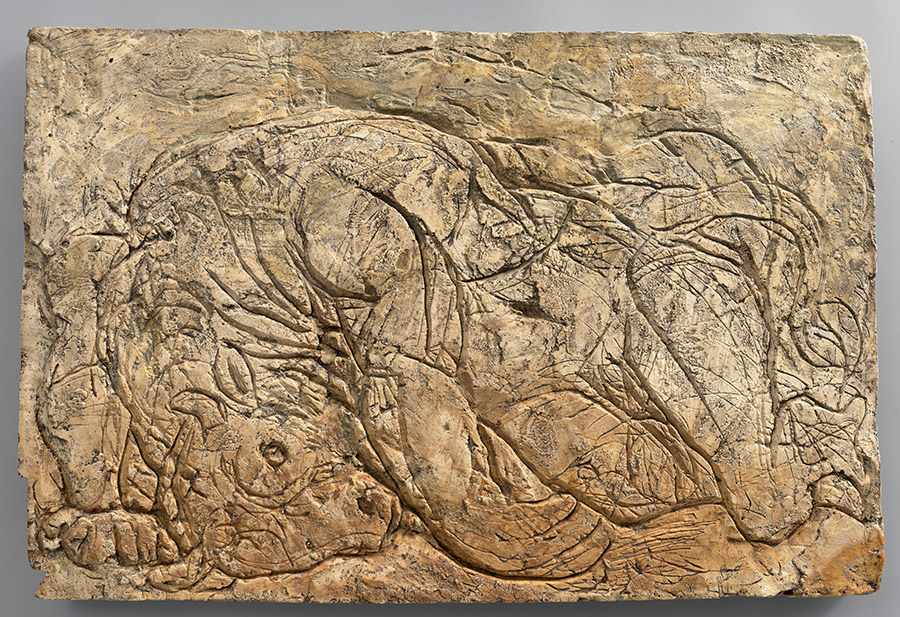From May 8 through September 16, 2019, the Centre Pompidou featured an exhibition titled Prehistory. A Modern Enigma, examining a subject that has been little explored to date: the fruitful relationship linking prehistory to modern and contemporary art.
One of the key moments in this relationship was the discovery of Lascaux in September 1940. The event had a profound effect on intellectuals and artists, beginning with Georges Bataille, who recounted a statement by Picasso: "No one has done better since." (Georges Bataille, La Peinture préhistorique, 1955, quoted by Silvia Loreti in the exhibition catalogue). Picasso was part of a vast current of avant-garde artists –from Giorgio de Chirico to Max Ernst, from Joan Miró to André Masson– who turned to prehistory, little explored until then in visual arts and surprisingly neglected until the early 20th century by the emerging discipline of Art History. In it the artists sought for an alternative to the sterile imitation of nature and a tool for their struggle to overcome the traditional historical narrative.
Referring to the origin of sculpture, Picasso noted: “Man began to make images only because he discovered them nearly formed around him, almost within reach. He saw them in a bone, in the bumps of a cave, in a piece of wood. One form suggested a woman to him, another a buffalo” (Brassaï, October 20, 1943, Conversations avec Picasso, Paris, Gallimard, 1997, p.113, published in English as Conversations with Picasso, Chicago, University of Chicago Press, 2002).
He was also drawn to the mystery of these creations that echoed his own: “What is conserved in the ground? Stone, bronze, ivory, bone, sometimes pottery. Never wood objects, no fabrics or skins. That completely skews our notions about early man. I doubt that I'd be wrong in saying that the beautiful objects from the 'stone age' were made of skin, fabric, and especially wood. The stone age ought to be called the ‘wood age’,” he said to Brassaï, with his usual sense of paradox.
We also know that Pablo Picasso showed at least two of his visitors (Malraux and Brassaï) a display case with two replicas of the famous Venus of Lespugue (discovered on August 9, 1922 in a cave of Rideaux, located in the Save gorges, near Lespugue), among other objects. One was damaged, like the original; in the other, the missing parts had been reconstructed. These figurines had probably been added to his collection in the late 1920s. As Silvia Loreti notes, "the emergence of visual references to prehistory in his work is inextricably linked to Surrealism." The exhibition at the Centre Pompidou captured this influence in his pieces from the early 1930s, such as Bust of a Woman, Boisgeloup, 1931 or the etched plaster of Wounded Minotaur, also produced in Boisgeloup in 1933-1934.
Prehistory. A Modern Enigma. Centre Pompidou, Paris, May 8 through September 16, 2019.
Ill. Minotaure blessé
Sculpture, inv. MP319
Musée national Picasso-Paris
© RMN-Grand Palais/Musée national Picasso-Paris/ photo Adrien Didierjean.
© Succession Picasso 2020





 Summary
Summary